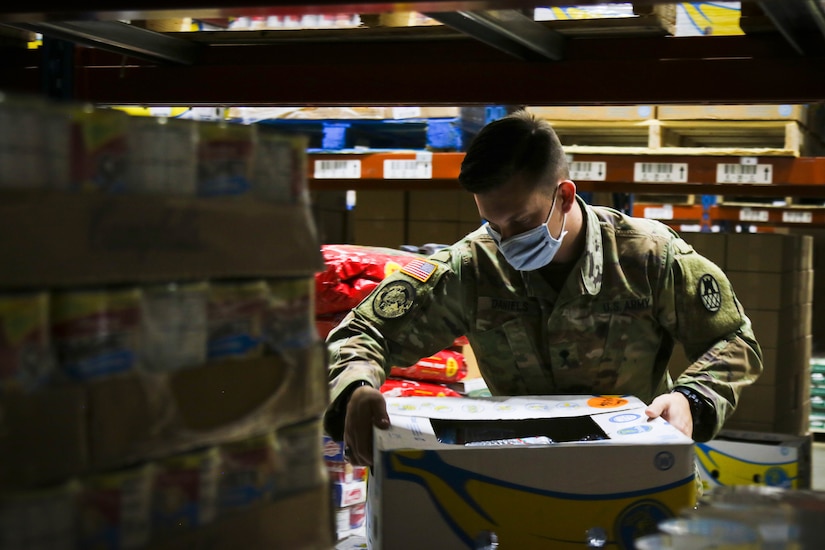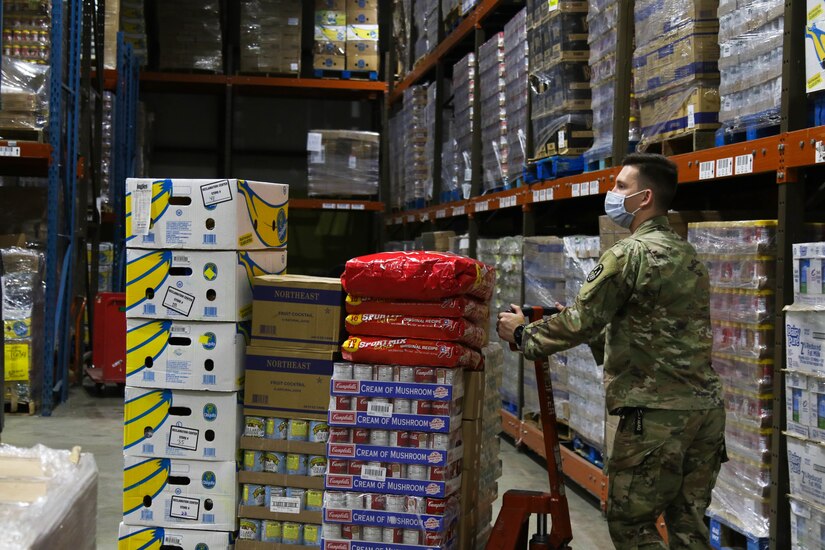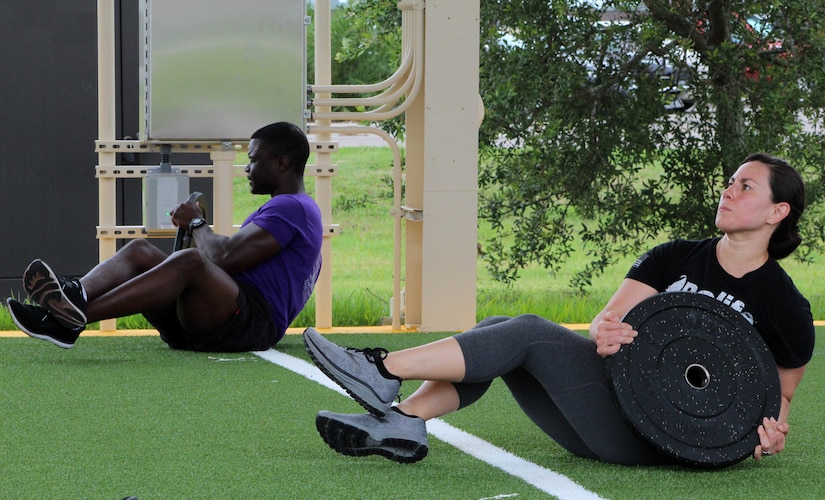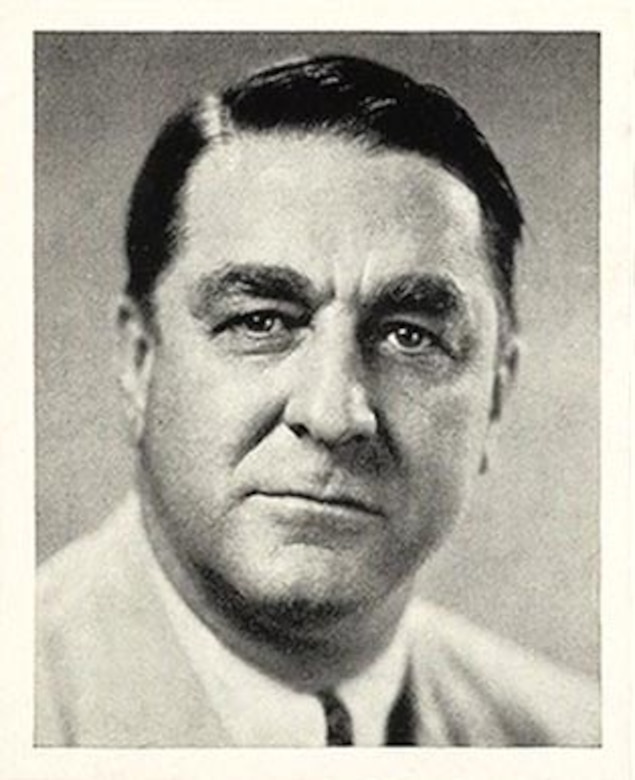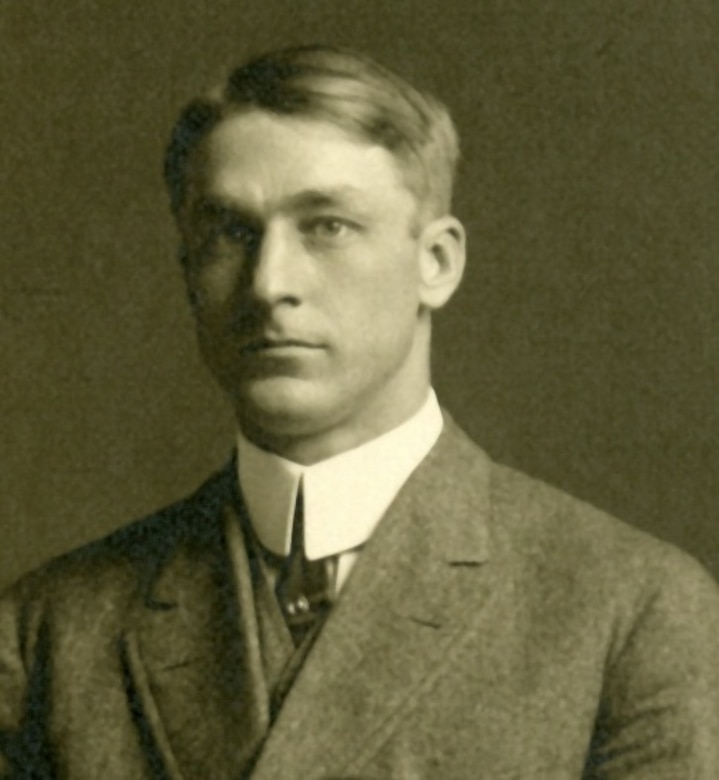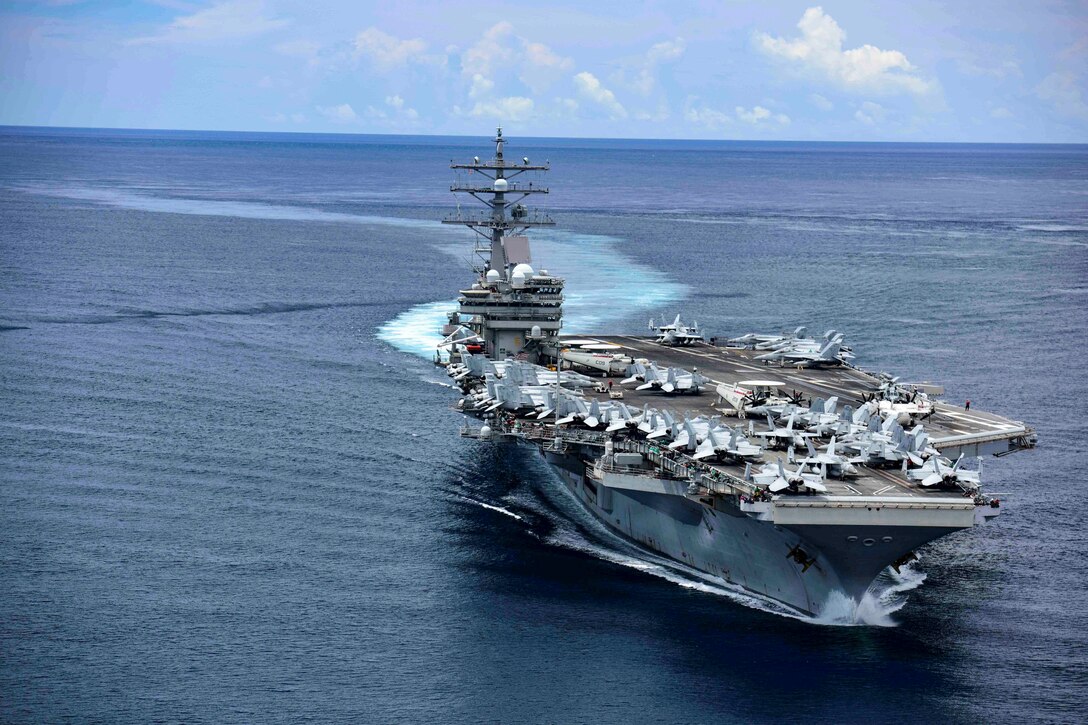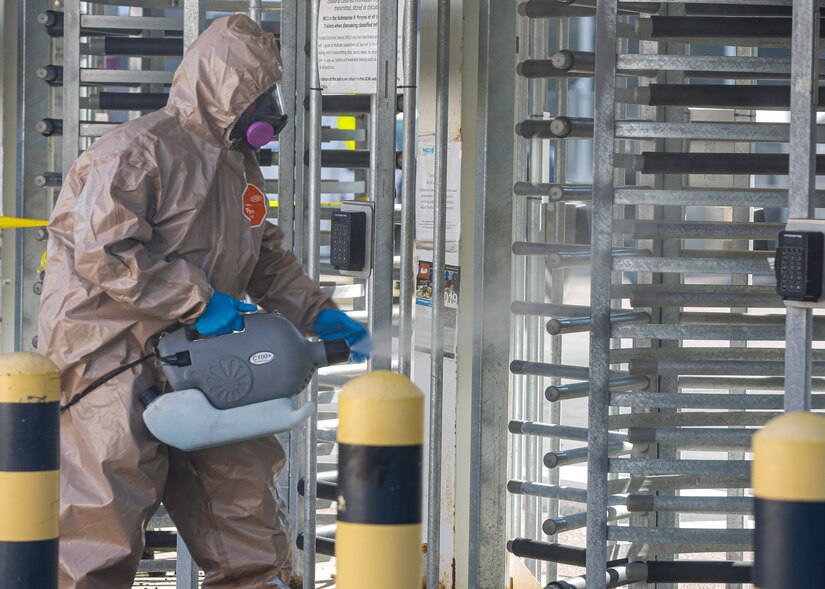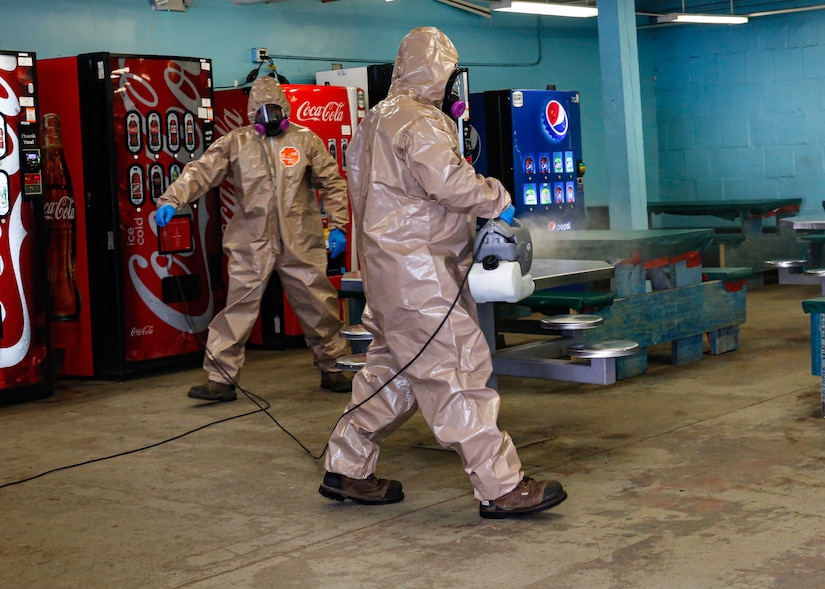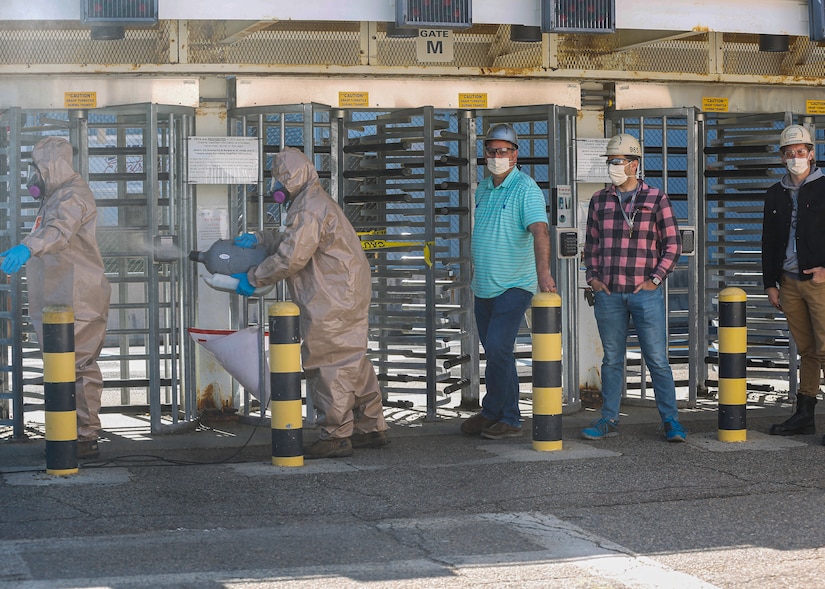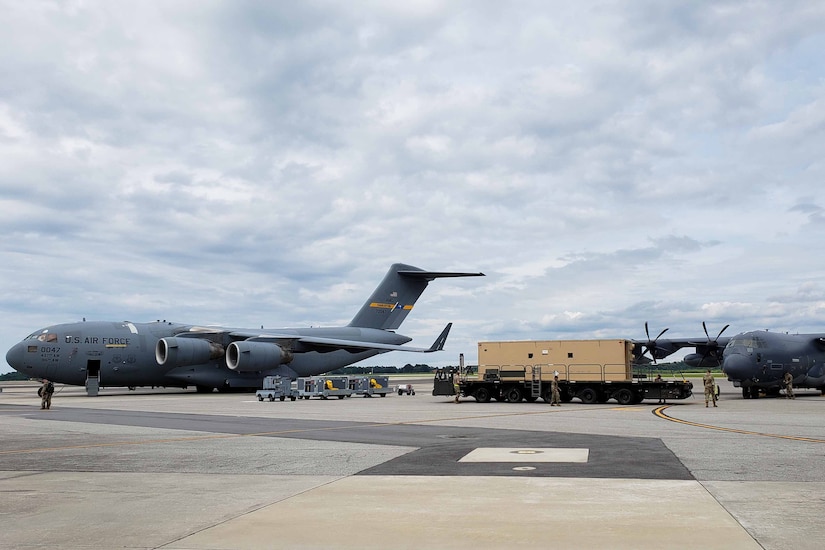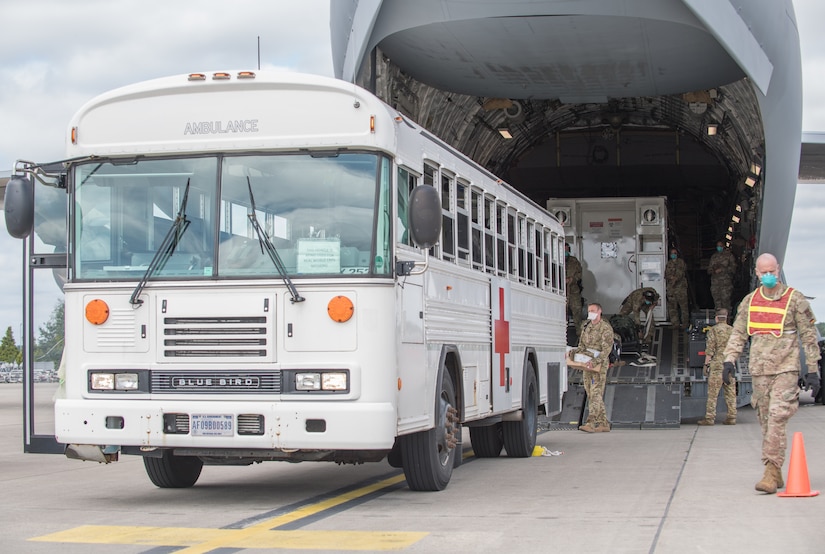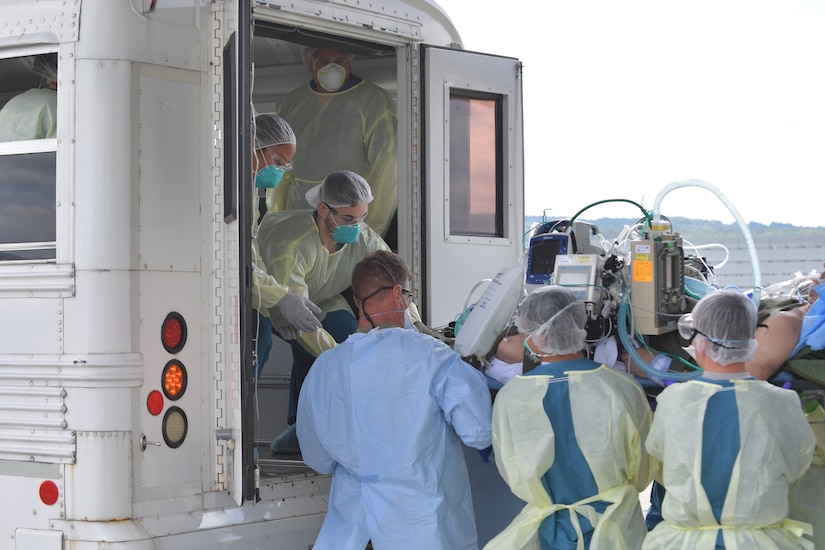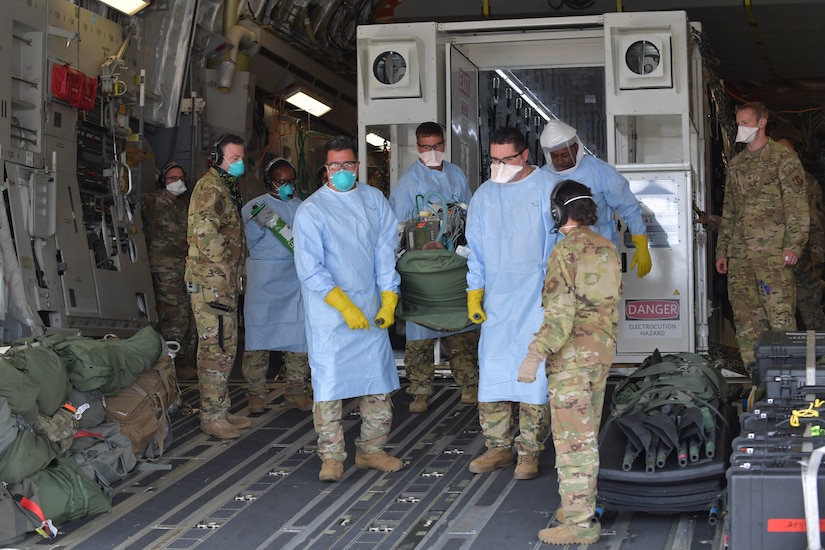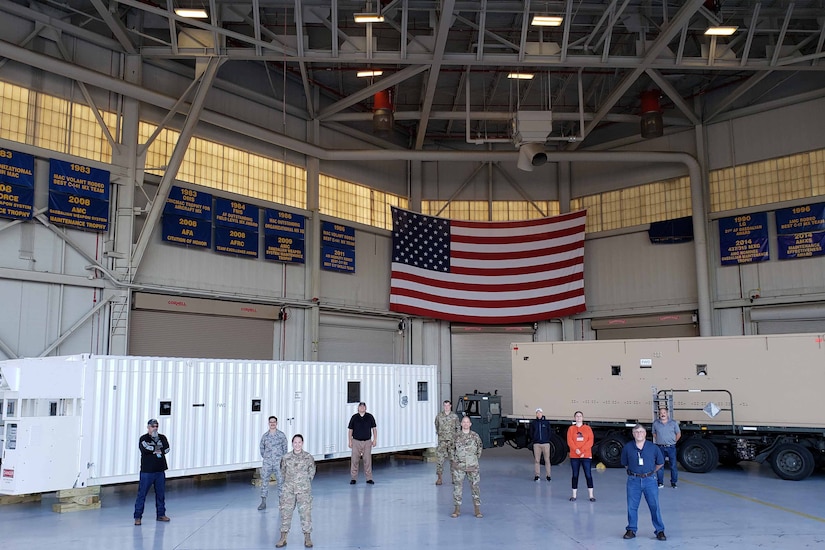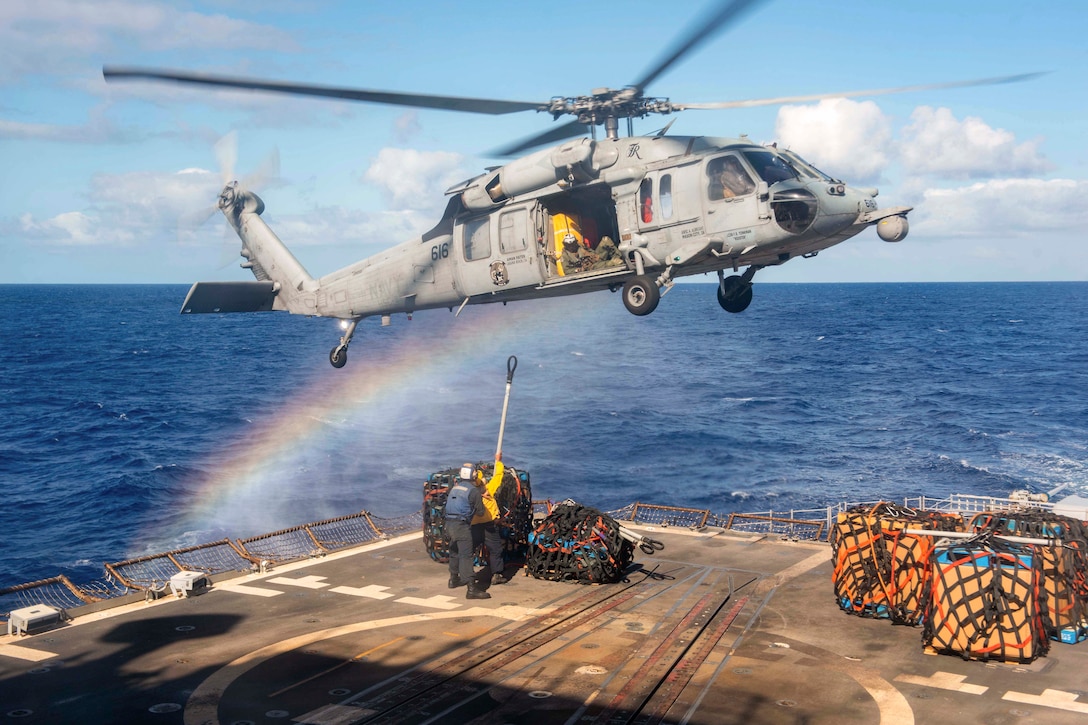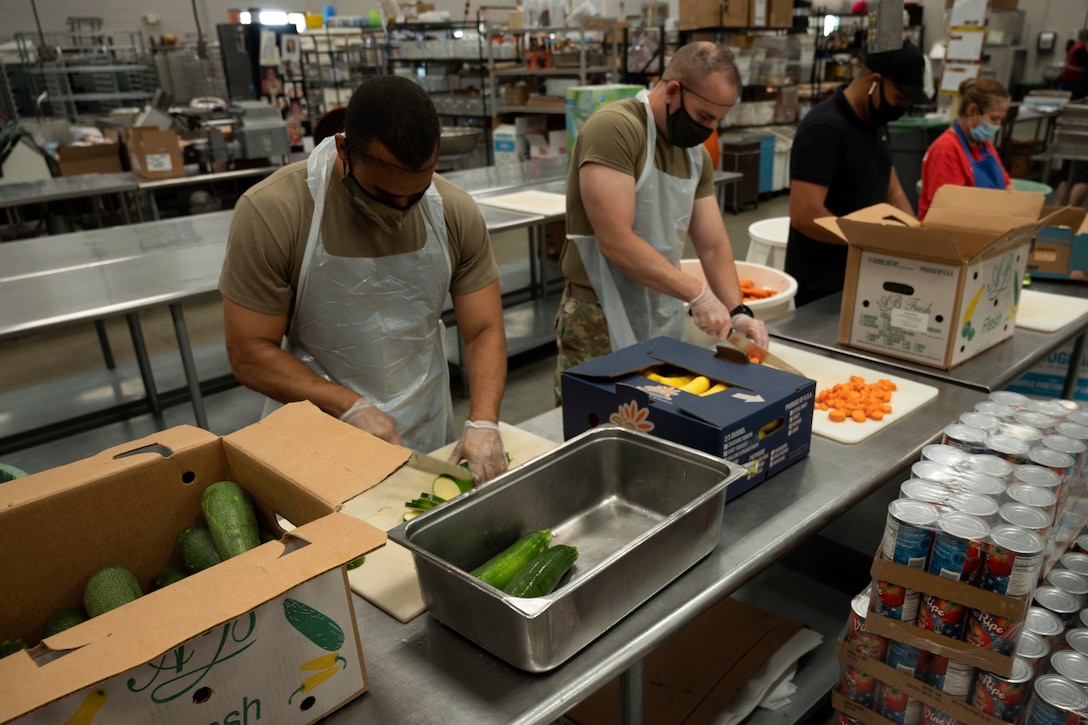July 7, 2020
|
BY C. Todd Lopez
, DOD News
The Air Force, Air Mobility Command and U.S. Transportation Command
have a new capability to bring large numbers of COVID-19 patients home
via airlift without putting associated flight crews at risk — and the
solution arrived quicker than expected.
The "Negatively Pressurized CONEX," or NPC, flew its first
operational mission June 30 out of Ramstein Air Base, Germany, just 95
days after Transcom published a joint urgent operational need statement
that spelled out a requirement to transport as many as 4,000 individuals
a month who might be infected with COVID-19.
The NPC is a 40-foot metal container outfitted with air-handling and
other equipment that can be carried aboard a C-17 transport jet. The NPC
can be used to move 23 COVID-19 patents who need the attention of
medical personnel. The system's onboard equipment ensures negative air
pressure on the inside so that the aircrew responsible for transporting
it and its patients won't be put at risk for infection.
The system also can be configured to hold as many as 30 ambulatory
personnel who might potentially be infected with COVID-19 and need to be
kept quarantined during an airlift operation, but who don't need the
attention of medical personnel.
Navy Capt. Jeff Stebbins, deputy director of the Joint Rapid
Acquisition Cell, commended the Joint Staff, Air Force, Air Mobility
Command and Transcom for taking a requirement spelled out March 28 and
turning it into a product that meets warfighter needs in just 95 days,
when the process might normally take more than a year to complete.
"Our work with the Joint Staff and Transcom was done in parallel, not
sequentially," Stebbins explained. "That allowed us to move faster."
Stebbins said Transcom sent the joint urgent operational need
statement to the Joint Staff for validation on the same day that the
Joint Rapid Acquisition Cell assigned it for execution to the Air
Force.
"Everybody was working together, and there was a lot of crosstalk,"
he said. "Because we all worked effectively together and in parallel
across departments, across agencies, we were able to move all of the
authorities necessary to execute this mission quickly."
Within the Air Force, it was Air Force Lt. Col. Paul Hendrickson, the
materiel leader for chemical, biological, radiological and nuclear
defense, who first conceived of the NPC.
"When the COVID crisis kicked off, Transcom and Air Mobility Command
began to see a need for the transport of COVID patients," Hendrickson
said. "They took a look at their inventory. And the only system that
they had readily available was the 'transportable isolation system,' or
TIS. It was developed through a JUON for the Ebola crisis."
The TIS, Hendrickson said, is basically a wire frame with plastic
sheeting over the top. It's fragile, and it can accommodate only about
six people.
Another option was the Portable Bio-Containment Module, a product of
the State Department, Hendrickson said. At the time, the Joint Program
Executive Office was working to get the PCBM its flight-worthiness
certification for transport on the C-17 aircraft. The PCBM carries only
three people, only four of the systems exist, and it would take a long
time to get more of them purchased, he said.
Neither solution was ideal to meet the needs to move so many COVID-19 patients.
Hendrickson said his office was working on a solution for "collective
protection" to provide CBRN protection to groups of people. For
example, he said, airmen who perform aircraft maintenance while required
to wear the full array of individual chemical protection equipment
might eventually suffer exhaustion due to the heat burden. They would
need a place to go between tasks where they could be safe from a
chemical attack, but at the same time be able to remove their individual
chemical protection suits so they could recover.
"We had been working with Osan Air Base and the 51st Aircraft
Maintenance Squadron [in South Korea] to figure out how to get them more
agile collective protection," he said. "We were working on a rapid
technology demo of what we call the 'Collective Protection CONEX,' which
is taking a 40-foot ISO container and retrofitting it to be a
collective protection facility."
The "Collective Protection CONEX" or CoPro CONEX, was conceived to
keep people inside it safe from dangers that might be outside.
The concept of the CoPro CONEX might be flipped on its head,
Hendrickson thought, to keep people on the outside safe from people on
the inside who might be contagious. He asked one of the officers within
his own agency if such a thing could be done — and within just a few
hours, he said, there was a mock-up of what would eventually be the NPC.
Air Mobility Command liked the idea, he said, and briefed it to the
Joint Rapid Acquisition Cell. They approved the plan and by April 7 Air
Mobility Command awarded a contract using the "other transaction
authority" process.
Hendrickson cited the contractors involved in building the NPC, along
with the C-17 program office; the Air Force Lifecycle Management
Center's engineering directorate; personnel at Joint Base Charleston,
South Carolina; members of Detachment 2, Air Force Operational Test and
Evaluation Center; the 28th Test and Evaluation Squadron out of Eglin
Air Force Base; the Air Mobility Command surgeon general and aeromedical
standards evaluation shop; three bio-containment pathologists and
others as being instrumental in getting the NPC developed, and then
proven airworthy and safe to fly.
The NPC was delivered to Joint Base Charleston, South Carolina, on
June 7, where it was subjected to a rigorous series of tests,
Hendrickson said. It had its test flight June 15, and flew its first
operational mission June 30.
Only one NPC exists, but officials expect that the Air Force will get
30 of the systems and that the first of those will roll off the
assembly line in mid-July. Hendrickson said he thinks the manufacturer
could produce at a rate of one NPC every eight days.
In addition to the NPC, there will also be 30 "NPC-Light" models,
which will be about 12 feet shorter than the NPC, carry fewer
passengers, and will fit on the smaller C-130 aircraft. The NPCL, he
said, is expected to move patients inside a theater of operations, while
the NPC will be used to move patients out of theater.
"The Air Force and what Lieutenant Colonel Hendricks' team has done
is a phenomenal job at developing an initial capability," Stebbins said.
"We believe this serves as an excellent case study for urgent
capability acquisition — that when a combatant command has an urgent
need, we use every tool available to rapidly develop and field a
capability."

